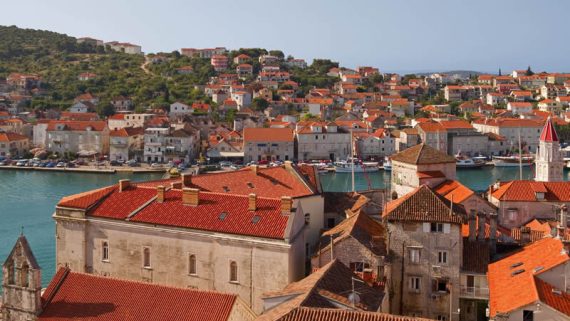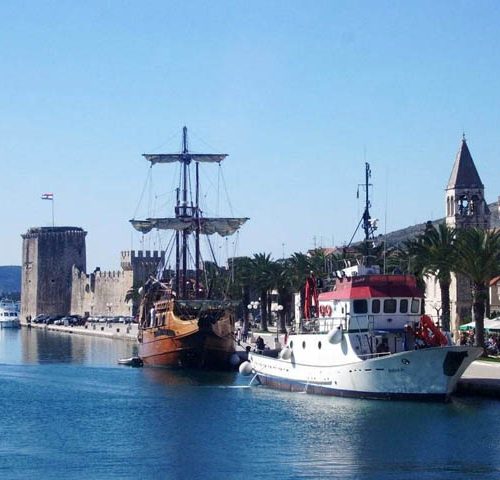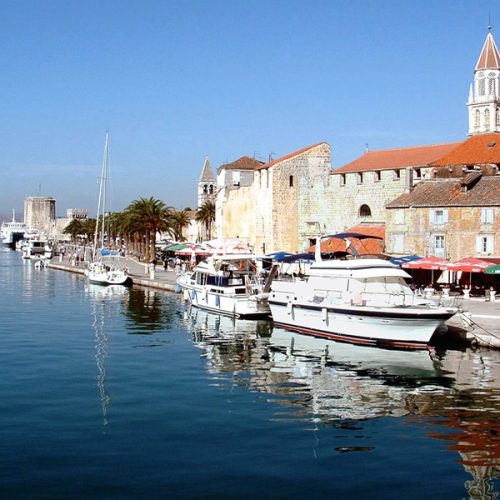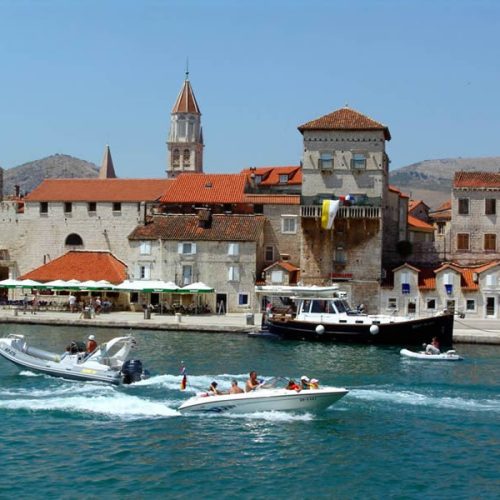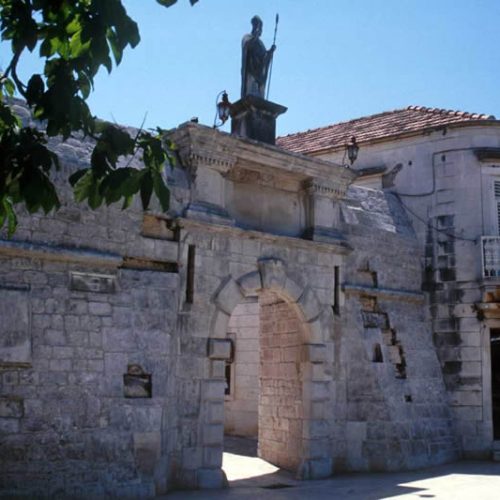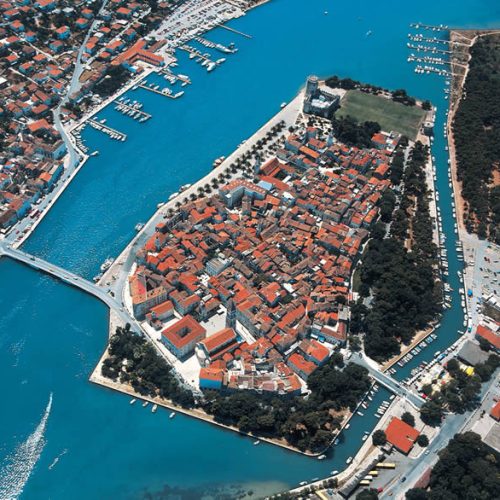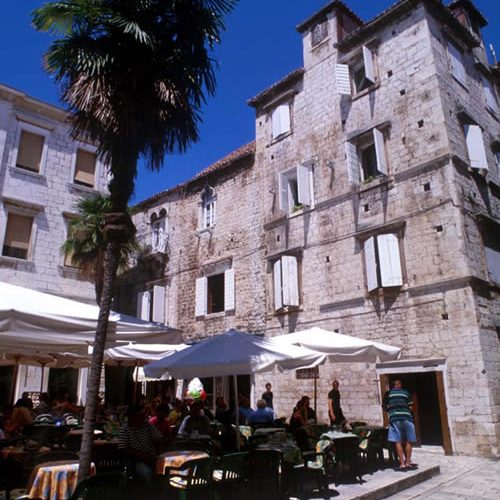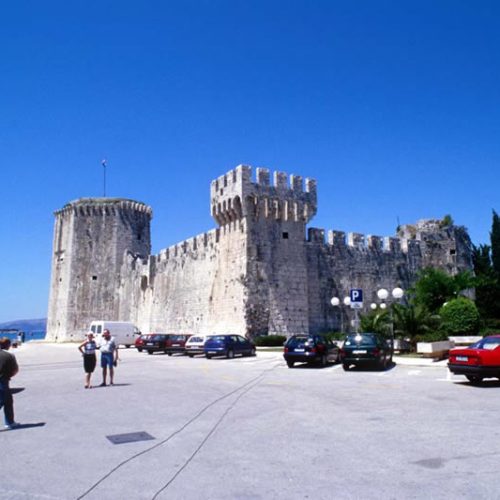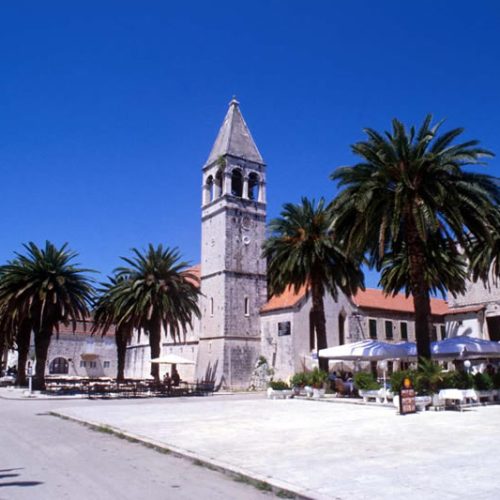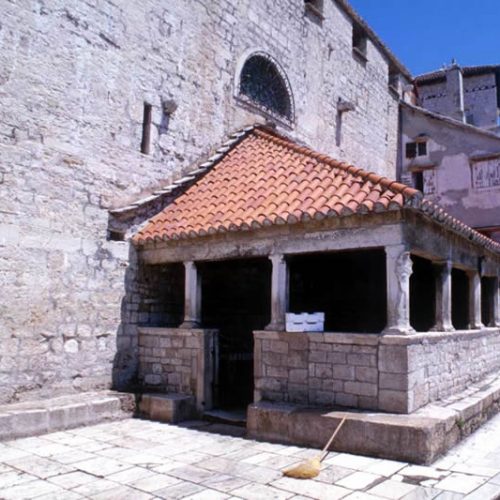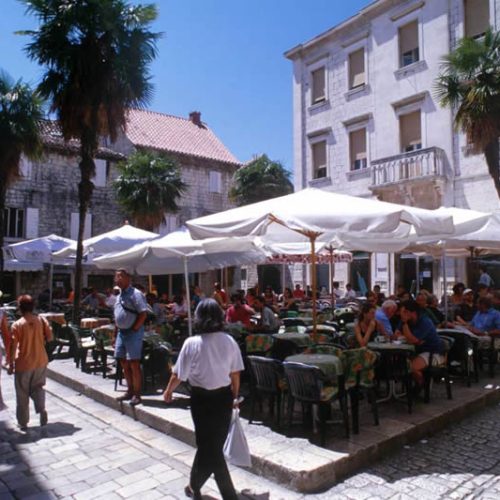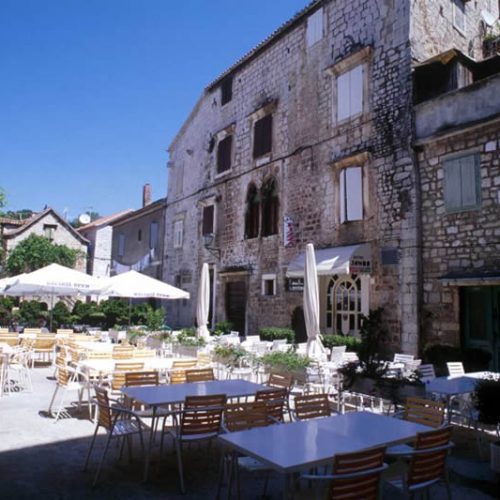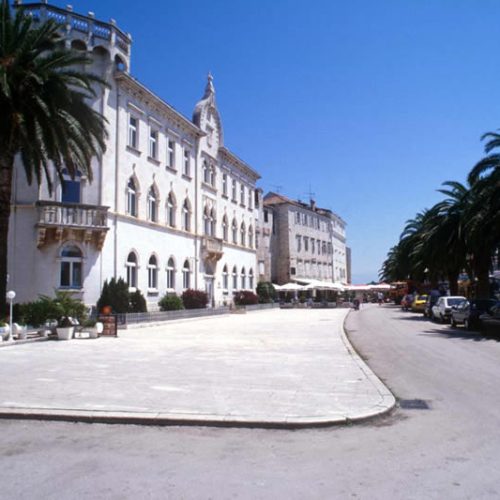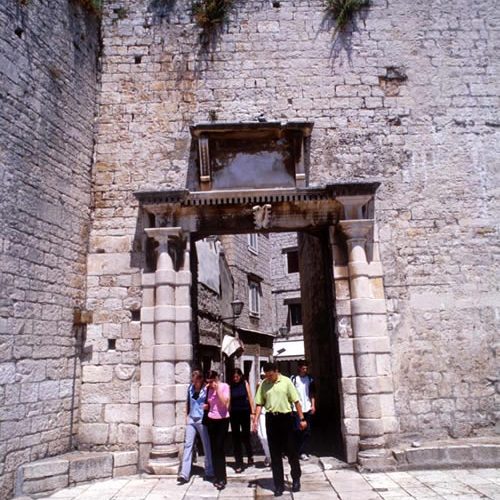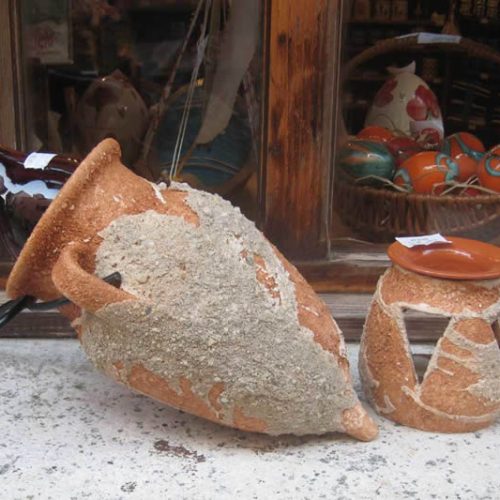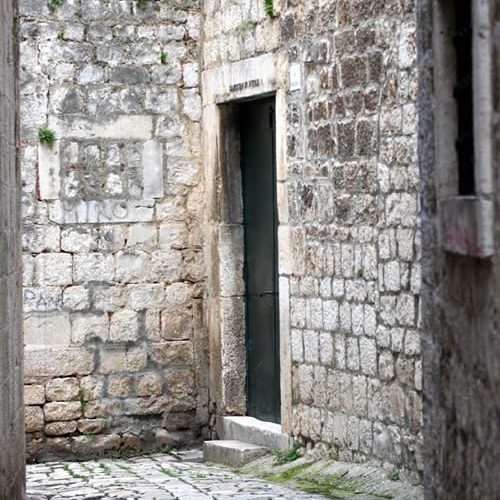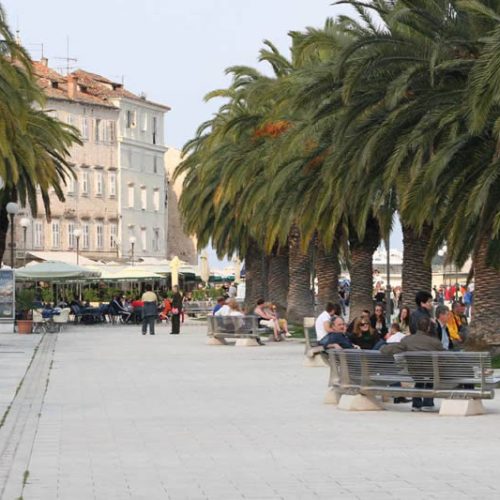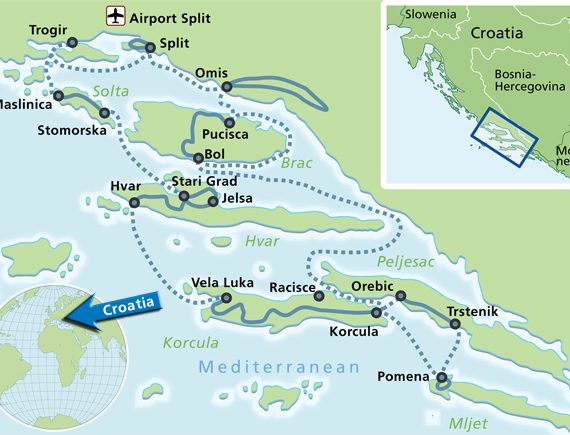TROGIR
Trogir is situated in the center of Dalmatia, on the eastern coastline of the Adriatic sea. The heart of Trogir is a small islet laying between the gentle hills on the mainland and the coast of the Island of Ciovo. Small town of 12000 citizens is the center of Trogir micro – region which covers about 250km2.
Trogir Riviera is an assemble of 20 islands, islets, small counties and villages. Find out more about the locations in Trogir area: Arbanija, Drvenik, Marina, Okrug Gornji and Donji, Seget, Sevid, Slatine, Trogir Center, Vinisce, Vranjica.
Climate, industry, people, money
Placed in the area of mild Mediterranean climate, Trogir with its 2700 sunny hours per year is a real treasure among other tourist destinations in Croatia. Average air temperature throughout the year is above 15°C, reaching more than 30°C in summer. Sea temperature is well above 25°C during summer period.
Tourism is the largest industry in Trogir region covering 50% of Trogir’s budget with more than 20.000 beds in hotels and private apartments. Still, there is very big fishing and agriculture tradition among population in surrounding areas.
Everywhere you go in Trogir area, you will meet very friendly and charming people, smooth combination of Southern temperament and warm hospitality, thanks to our long tourist tradition.
Trogir is connected with major Europe cities through very well organized airline network. Airport Split is only 3km from Trogir; so literally, you are just few minutes away of our beautiful town. Routes shown on the map are some of direct flights for Split, although, if you fly via Zagreb, you will find many other options to reach Split. Ask your Airline Company about details (most of the European airlines companies have daily connections with Split throughout summer period). If you are coming overseas, fly through Frankfurt or London Heathrow (frequent daily flights to Split from these airports!).
All payments and prices are in Croatian Kuna (Kn), although you may ask to pay in EUR in almost every shop and restaurant, except food-markets. Approximate exchange rate is: 1 EUR = 7,5 Kn. There are four bank offices and several ATM (cash machines) located in Town center, accepting all major credit cards.
Photogallery
HISTORY & CULTURE
was settled by the Greeks in IV-III century BC during theirs hunts across Mediterranean.
In the first century AC, Trogir became Roman municipality “TRAGURIUM CIVIUM ROMANORUM” joined to Salona, center of Roman province of Dalmatia. Upon the fall of the Roman Empire in fifth century, Trogir has been developed as a independent town.
In the sixth century, the Croats settled in Trogir area and began creating works of art. Right from the beginning of the Middle Ages the old Greek town of Tragurion felt the fire of the new medieval culture. Builders and masons built churches and decorated it with interlaced ornamentation.
During the tenth century citizens of Trogir renewed they old municipal life of the formal Roman “oppidum”. In their struggle against the Venetians, the kings of Hungary got Trogir to their side in return for a guarantee of Independence. Its citizens could freely elect their city leaders and, already in the eleventh century, the small community crowded on the fortified islet, had its own Bishop who was suffrage of the Bishop of Split.
At the beginning of the 13th century, while they were still recovering from the raids of the Venetians, who had attacked them in 12th century during their war with Hungary for the attractive Dalmatian coast, Trogir citizens under Rector Ilija from the Kacic family built their new cathedral. forty years later, RADOVAN carved its main portal in Seget stone.
Prospect of Trogir was brutally interrupted 1420. when town was occupied by Venetians after long struggle, and it was badly devastated. Occupation lasted for almost four centuries, until 1797. During that time, Trogir was rebuild again and many new palaces, houses, towers and fortresses were erected. After short period of independence, Trogir had fallen under Napoleon’s domination which was remembered by significant communal and health – care reforms, and modernization of economy.

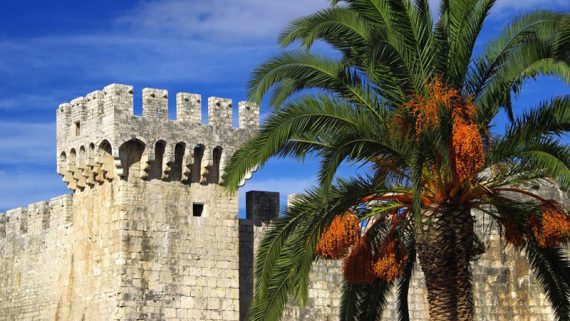
Trogir
History & Culture
Meet the city with 2300 years of tradition. Its rich culture is created under the influence of old Greeks, Romans, Venetians. Trogir with concentration of palaces, churches, towers, fortress on a small island in aevery way deserves it’s nickname “THE STONE BEAUTY”
Austrians conquered town one more time (1814 – 1914) when citizens suffered illness, epidemics and hunger. After 1848, process of democratization started, and very shortly, 1877, Croats were rulers in their town. After the first world war, Trogir, together with Croatia, became a part of State of South Slovenes, but agony of hunger and indigence wasn’t finished.
Real improvement of standard and the way of life started in 1970-ies when Ship industry and tourism were employing more then 50% of Trogir citizens. Further development was interrupted by aggression on Croatia 1991, when people of Trogir and its economy suffered serious consequences. Ongoing integration processes in European Community started with UNESCO’s acknowledgement of Trogir as a World cultural Heritage in 1997. Now, on the beginning of the new Millennia, Trogir becomes popular tourist destination as it was in ’80-ies.
HOW TO REACH TROGIR?
Trogir is connected with major Europe cities through very well organized airline network. Airport Split is only 3km from Trogir; so literally, you are just few minutes away of our beautiful town. Routes shown on the map are some of direct flights for Split, although, if you fly via Zagreb, you will find many other options to reach Split. Ask your Airline Company about details (most of the European airlines companies have daily connections with Split throughout summer period). If you are coming overseas, fly through Frankfurt or London Heathrow (frequent daily flights to Split from these airports!).
Trogir in Croatia If you are coming by the road, you have three choices:
1. Highway Dalmatina A1 – Croatian Highway Dalmatina A1 (the ex-Prgomet Highway)
2. Coastal road – Jadranska Magistrala. Beginning at Croatia’s north-western border follow Jadranska Magistrala Road through the following towns before reaching Trogir:
Rijeka – Senj – Karlobag – Zadar – Sibenik – Primosten – Trogir.
3. Middle Croatian Highway D1 – Beginning at Croatia’s northern border follow the D1 Highway through to the capital city Zagreb and then through to the following towns before reaching Trogir:
Karlovac – Plitvice (National Park) – Korenica – Gracac – Knin – Drnis – Trogir.
You may want to visit us by boat, either in private arrangement or by organized connections with Italian coastal cities of Ancona, Pescara, Bari or Venetia. If you are with your own boat, check our Nautical Guide for complete and up-to-date information about marinas, ports and berths in Trogir area. For ferry transfers, contact your Maritime agency for timetables or visit official web site of Croatian ferry company “Jadrolinija“.
WHAT TO DO IN TROGIR?
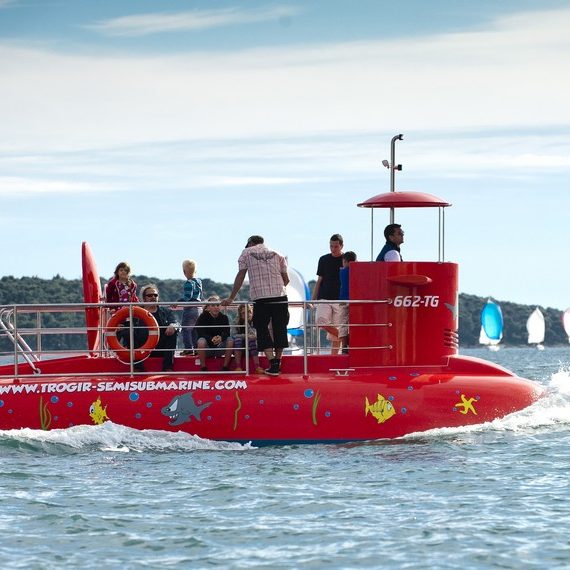
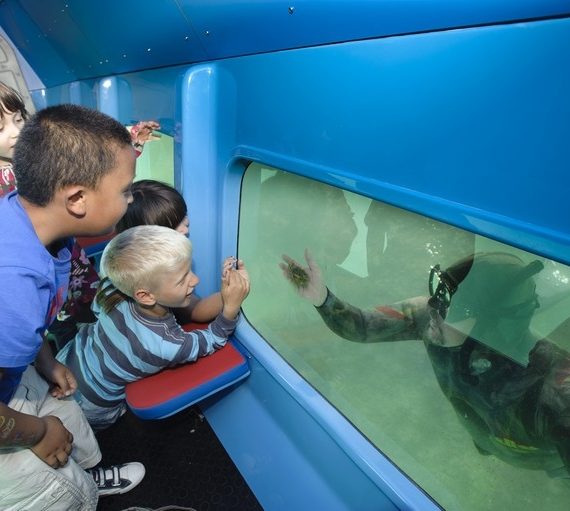
Semi Submarine
Experience the Trogir area in a semi-submarine! A unique experience for the whole family-breathtaking panoramic views and the excitement of exploring the underseas world of the Adriatic coast.
The semi submarine looks just like a real submarine, but its interior is designed for guests to experience both the underwater world and the world from above the sea.


Aquapark Kaštela
The idea to build up an aquapark in the Dalmatian region rose up seven years ago. The touristic importance and traffic of this region is high, on the other hand additional entertainment facilities are needed, the range of touristic attractions can be increased on a profitable way.


Olive harvesting
Olive harvesting is organized with expert guidance through the process of production of virgin olive oil through cold pressing.
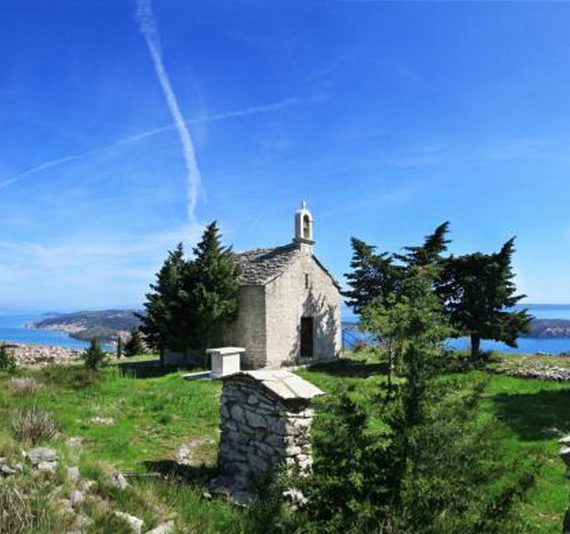
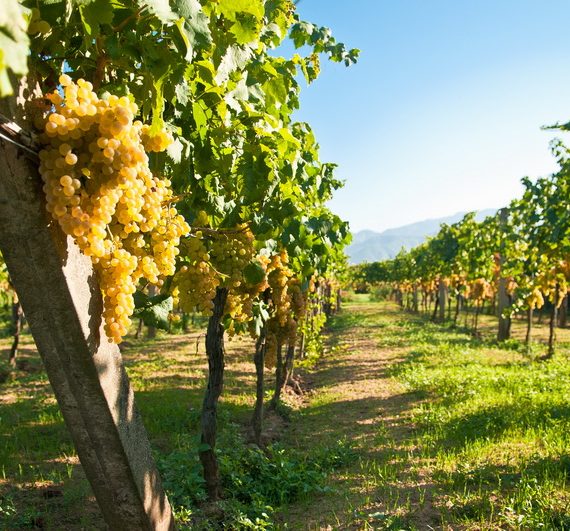
Path of Health Trogir Hiking
(Trogir, Seget Donji, Napoleon's Path, the medieval church of St. Elijah)
Join this tour on the hiking path than leads you along the countryside of Trogir and the Seget Riviera, with its vineyards, olive yards and other farmlands. You will see the forgotten Napoleon’s Path and the medieval church of St. Elijah on the Sutilija hill (302 meters above sea level), from where you can enjoy in a breathtaking view to Seget Valley and the Middle Dalmatia Islands of Drvenik, Šolta, Brač, Hvar and Vis.
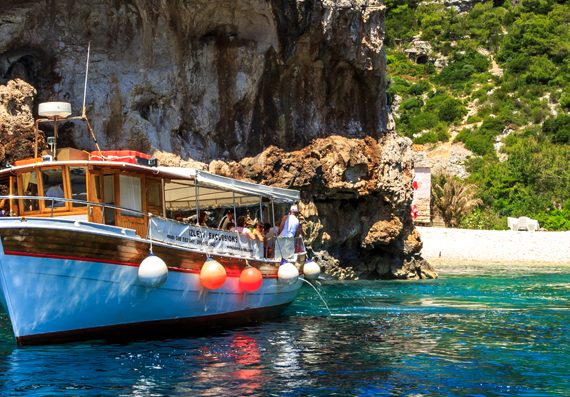
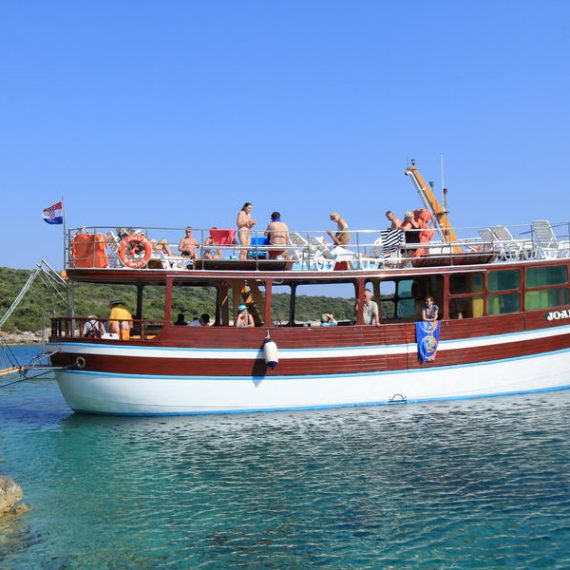
Boat tours and skippered boat rides
Take the time to visit the surrounding islands and enjoy a glass of champagne with freshly caught oysters. Or let us drop you off with a picnic on one of the islands for a day of skinny-dipping with your partner.
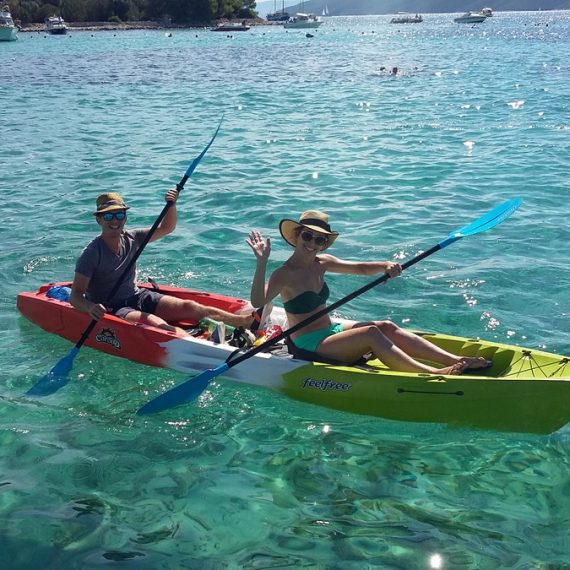
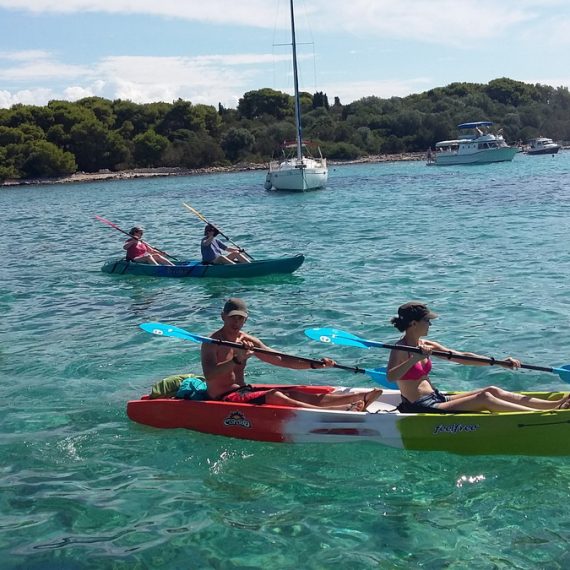
Kayak Adventure
Relax your body and mind by the crystal clear waters of Adriatic Sea!
Feeling sporty but at the same time you don’t want to exaggerate? This boat and kayak adventure is ideal for you! Treat yourself with perfect amount of sport and relaxation and come with us on this excursion to one of the most beautiful lagoons of Middle-Dalmatian archipelago. We will embark on a boat in a small tourist village Seget Donji, just outside of Trogir, and set a course for the Drvenik Veli Island.
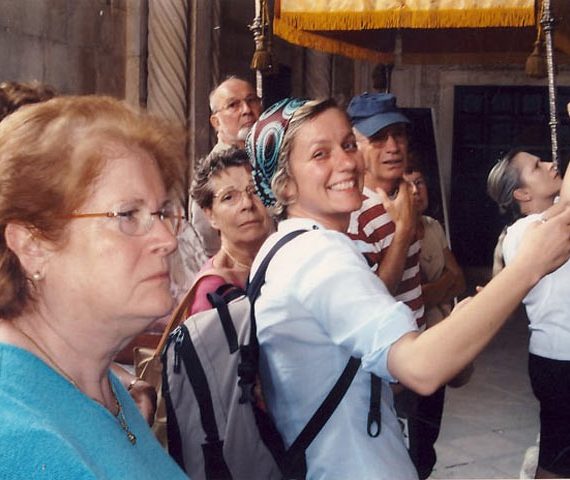
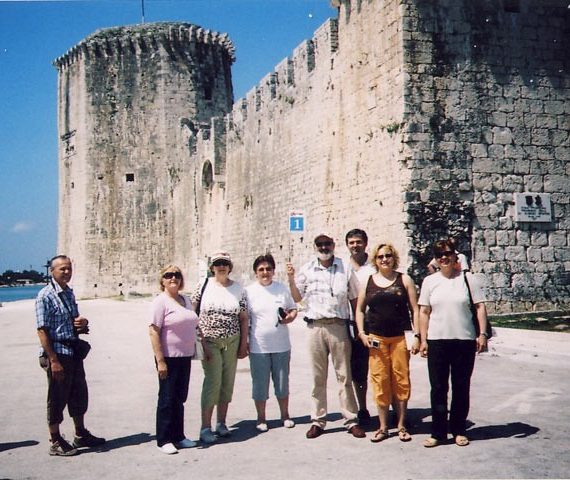
Trogir tourist guides
We speak 13 languages and we invite you to contact us with full confidence. All guides have a license for Split-Dalmatia County and some of them also for Šibenik-Knin county, so feel free to engage us in all sightseeing tours in these two counties.

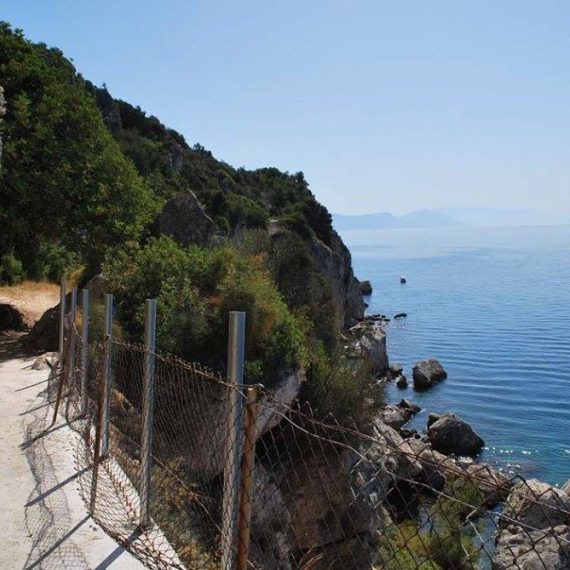
Bicycle routes
Čiovo is an ideal destination for those who prefer a quiet family holiday, without the crowds, noise and tourist crowds, famous for its beautiful beaches and small bays. Čiovo is a pleasant location for walkers and cyclists. Decorated walking paths leading to the top of the island Čiovo, or along the coast to Trogir and Slatine.
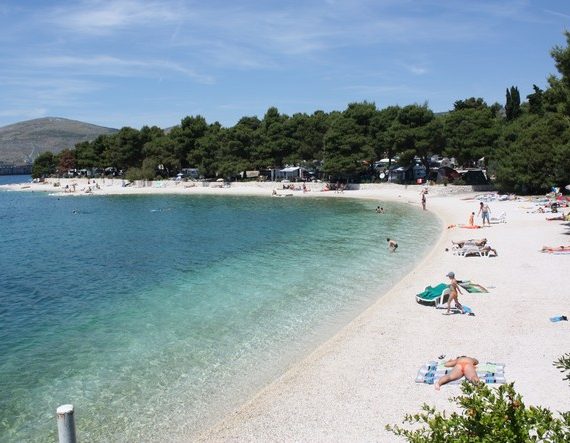
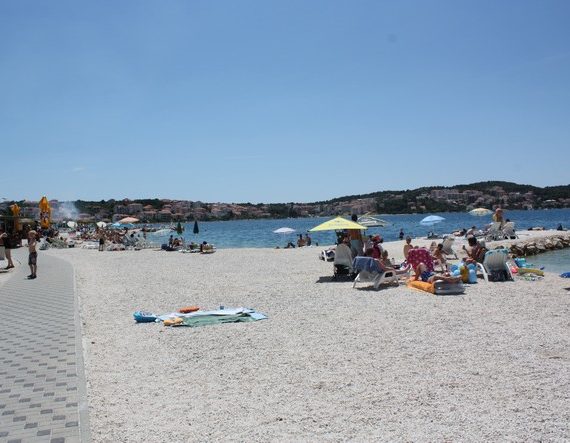
Beaches
The best known and most popular beach in Trogir Riviera is certainly the beach in Okrug Gornji. Only 3 km from the historic town of Trogir on the south side of Ciovo Island stretches over 2 km long beautiful pebble beach known as “Okrug Copacabana “. A large selection of pizzerias, restaurants, cafes and bars with different rhythms of the music captures the true experience of Brazil.
 English
English Deutsch
Deutsch Hrvatski
Hrvatski
